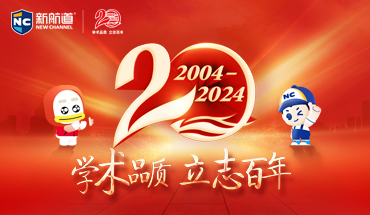托福阅读段落分析
阅读量:
一、实例分析
TPO4 Cave Art in Europe 第4段
第 一句:
The particular symbolic significance of the cave paintings in southwestern France is more explicitly revealed, perhaps, by the results of a study conducted by researchers Patricia Rice and Ann Paterson.
关键句,研究者研究的结果清晰地表明了法国西南部岩洞画的特殊象征意义;
第二句:
The data they present suggest that the animals portrayed in the cave paintings were mostly the ones that the painters preferred for meat and for materials such as hides.
呈现事实,用研究数据表明绘画者喜欢吃的动物或者来做兽皮的动物就是岩洞画中常被绘画的动物。
第三句:
For example, wild cattle (bovines) and horses are portrayed more often than we would expect by chance, probably because they were larger and heavier (meatier) than other
animals in the environment.对事实举例证明,进一步论证第二句的事实。
第四句:
In addition, the paintings mostly portray animals that the painters may have feared the most because of their size, speed, natural weapons such as tusks and horns, and the unpredictability of their behavior.
首先用in addition表示与前面某句话的并列,同样,与第二句一样是对事实的呈现。
第五句:That is, mammoths, bovines, and horses are portrayed more often than deer and reindeer.
具体例子来证明第四句的事实。
第六句:
Thus, the paintings are consistent with the idea that the art is related to the importance of hunting in the economy of Upper Paleolithic people.
关联词thus表示这是一个结果或者总结,表明岩洞艺术与打猎的重要性有关,也是对以上句子第二句至第五句的总结。
第七句:
Consistent with this idea, according to the investigators, is the fact that the art of the cultural period that followed the Upper Paleolithic also seems to reflect how people got their food.
Consistent with表明与前一句是并列关系,该句内容说明旧石器时代晚期的文化期的艺术也反映了人们如何得到食物;
第八句:
But in that period, when getting food no longer depended on hunting large game animals (because they were becoming extinct), the art ceased to focus on portrayals of animals.
关联词but表示转折,句子内容陈述了另一个事实。
在段落总结后,大家可以明确段落的基本结构,三大部分:
第 一部分:主旨句,明确整段主题第二部分:摆事实,举例子(可能是多个并列的事实以及例子)第三部分:总结句,再次点明主旨。
二、规律探讨
1. 在学术性文章中,一般需要具备三个组成部分:
(1)Topic 话题:即文章的主角是什么。比如讲解某个科学理论、研究某种社会现象,探讨某个历史事件;
在托福文章中,这种导入性信息往往出现在篇首位置。考生可以根据篇首段信息对整篇文章所要讨论的核心内容有所了解;
(2)Aspects 方面:即将篇首的话题延伸拓展为若干个方面进行阐述说明。若话题为某个科学论点,则方面可能分为若干个支持论据;若话题为某种自然现象,则方面可能分为若干个内外成因;若话题为某个历史事件,则方面为几段发展时期;
在托福阅读文章中,往往依照各个方面之间的层次关系,将各个方面拆分为若干个独立的自然段落,共同组成行文主体;
(3)Attitude态度:即文章的作者对于所讨论话题持怎样的态度。或是积极肯定,或是消极否定,或是保持中立。在托福阅读文章中,态度往往是被较多的淡化甚至有可能省略不提。
Topic话题+ Aspects方面+ Attitude态度,这三要素加起来就是标准学术论文体的“T+A+A篇章结构”。托福文章大都遵循这种结构,考生通过篇首段落信息来把控整个文章话题及大致讨论方向,再抓住文章的各个段落主旨,便可洞悉整个文章脉络和逻辑结构。
2. 学术性文章的自然段落,一般需要具备两个组成部分:
(1) Topic Sentence 主旨句:表达段落的主旨,即本段想要表达的核心内容是什么;
(2) Detail 细节:为了详细说明段落中心含义,所罗列的相关支持内容,即本段通过哪些例证来阐明主旨句。
Topic Sentence主旨句+ Detail细节,这两个要素加起来就是标准学术论文体的“TS+D段落结构”。托福文章段落大都遵循这种结构,考生通过段落主旨句就可以把握该段的中心含义。
当考生们了解了这种TAA篇章结构(Topic话题+ Aspects方面+ Attitude态度)和TS+D段落结构(Topic Sentence主旨句+ Detail细节)的行文规律后,对文章框架的把握就会做到心里有数,更有利于提高阅读速度和定位有效信息的准确度。
三、段内结构子类别
TPO26-1 Energy and the Industrial Revolution
一 让步式段落
Paragraph 1: For years historians have sought to identify crucial elements in the eighteenth-century rise in industry, technology, and economic power known as the Industrial Revolution, and many give prominence to the problem of energy. Until the eighteenth century, people relied on energy derived from plants as well as animal and human muscle to provide power. Increased efficiency in the use of water and wind helped with such tasks as pumping, milling, or sailing. However, by the eighteenth century, Great Britain in particular was experiencing an energy shortage. Wood, the primary source of heat for homes and industries and also used in the iron industry as processed charcoal, was diminishing in supply. Great Britain had large amounts of coal; however, there were not yet efficient means by which to produce mechanical energy or to power machinery. This was to occur with progress in the development of the steam engine.
二 总分式段落
Paragraph 2: In the late 1700s James Watt designed an efficient and commercially viable steam engine that was soon applied to a variety of industrial uses as it became cheaper to use. The engine helped solve the problem of draining coal mines of groundwater and increased the production of coal needed to power steam engines elsewhere. A rotary engine attached to the steam engine enabled shafts to be turned and machines to be driven, resulting in mills using steam power to spin and weave cotton. Since the steam engine was fired by coal, the large mills did not need to be located by rivers, as had mills that used water- driven machines. The shift to increased mechanization in cotton production is apparent in the import of raw cotton and the sale of cotton goods. Between 1760 and 1850, the amount of raw cotton imported increased 230 times. Production of British cotton goods increased sixtyfold, and cotton cloth became Great Britain’s most important product, accounting for one-half of all exports. The success of the steam engine resulted in increased demands for coal, and the consequent increase in coal production was made possible as the steam-powered pumps drained water from the ever-deeper coal seams found below the water table.
三 并列式段落
Paragraph 4: Steam power and iron combined to revolutionize transport, which in turn had further implications. Improvements in road construction and sailing had occurred, but shipping heavy freight over land remained expensive, even with the use of rivers and canals wherever possible. Parallel rails had long been used in mining operations to move bigger loads, but horses were still the primary source of power. However, the arrival of the steam engine initiated a complete transformation in rail transportation, entrenching and expanding the Industrial Revolution. As transportation improved, distant and larger markets within the nation could be reached, thereby encouraging the development of larger factories to keep pace with increasing sales. Greater productivity and rising demands provided entrepreneurs with profits that could be reinvested to take advantage of new technologies to further expand capacity, or to seek alternative investment opportunities. Also, the availability of jobs in railway construction attracted many rural laborers accustomed to seasonal and temporary employment. When the work was completed, many moved to other construction jobs or to factory work in cities and towns, where they became part of an expanding working class.







